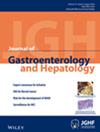Bifidobacterium Lactobacillus Triple Viable Alleviates Slow Transit Constipation by Regulating Gut Microbiota and Metabolism
Abstract
Background
Gut microbiota plays a crucial role in the pathogenesis and treatment of functional constipation (FC). The aim of this study was to explore the therapeutic effects of Bifidobacterium Lactobacillus triple viable on slow transit constipation (STC).
Methods
Patients with STC who met the Rome IV criteria received Bifidobacterium Lactobacillus triple viable. Gastrointestinal transit time (GITT) and constipation-related symptoms were assessed before and after receiving Bifidobacterium Lactobacillus triple viable. Additionally, a rat STC model was induced by loperamide and was treated with Bifidobacterium Lactobacillus triple viable to evaluate whether Bifidobacterium Lactobacillus triple viable could improve constipation in the rats and to explore the possible mechanisms involved.
Results
In patients with STC, Bifidobacterium Lactobacillus triple viable accelerated GITT and improved constipation-related symptoms, including bowel movement frequency, hard bowel movement, incomplete defecation, defecation time, purgative measures, and stool form. In addition, Bifidobacterium Lactobacillus triple viable improved body weight, food intake, bowel movement, the fecal water content, and the intestinal propulsion rate in STC rats. It regulates the gut microbiota structure in rats; increases serum acetylcholine (Ach), 5-hydroxytryptamine (5-HT), substance P (SP), and vasoactive intestinal peptide (VIP); increases fecal long-chain fatty acids (LCFAs); upregulates the mRNA expression of aquaporin 3 (AQP3) and aquaporin 3 (AQP8); and downregulates the mRNA expression of Toll-like receptor 2 (TLR2), Toll-like receptor 4 (TLR4), and interleukin-1β (IL-1β).
Conclusions
Bifidobacterium Lactobacillus triple viable ameliorated the GITT and constipation-related symptoms of patients with STC and improved the STC in rats by regulating the gut microbiota and metabolism.


 求助内容:
求助内容: 应助结果提醒方式:
应助结果提醒方式:


